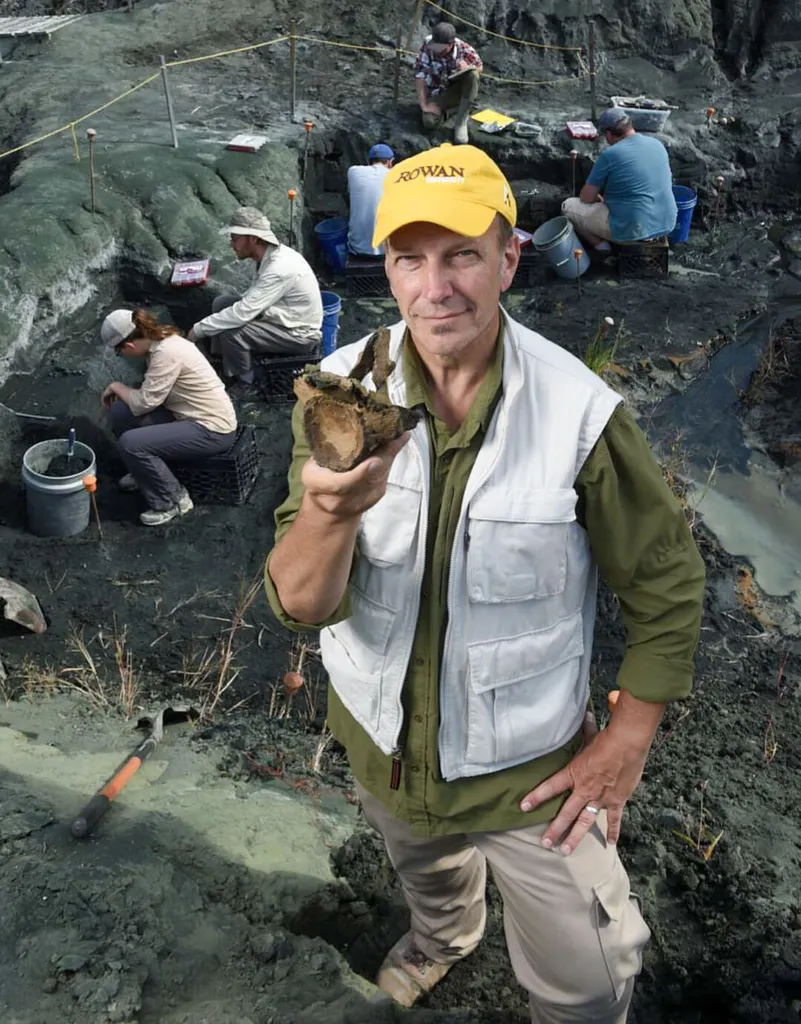- March 31, 2025
- By Karen Shih ’09
Out on the wind-whipped steppes of Patagonia, it can take months of swinging a pickaxe and hauling buckets of rocks—subsisting on tuna and crackers and avoiding scorpions and puma—to find a fossil of note.
But now, Kenneth Lacovara M.A. ’88 is making it easier for budding paleontologists to unearth buried treasure with the March 29 opening of the Jean & Ric Edelman Fossil Park and Museum of Rowan University in southern New Jersey. Visitors can dig alongside experts at an old quarry (and 66-million-year-old dinosaur graveyard) and explore gleaming interactive exhibits, including more than 50 full-size models of Cretaceous-era creatures that roamed the North American East Coast.

“I’m really excited to give people that awe about the amazing planet they live on,” said founder Lacovara, dean of the School of Earth and Environment at Rowan. The museum was named one of Smithsonian Magazine’s most anticipated openings.
Lacovara first fell in love with paleontology as a Boy Scout, when he pored over a box of fossils brought to a troop meeting. After a brief interlude into the jazz world (he was the house drummer at the Golden Nugget Casino for a year), he dedicated himself to geology and came to the University of Maryland for his master’s degree. He recalls taking advantage of local Metro stop construction to sneak through a fence and discover a “gorgeous” piece of petrified wood.
“If you want to find a paleontologist, dig a hole!” he said with a laugh.
He’s taken his tools around the world, from the Gobi to the Sahara deserts, where he “got very lucky right out of the gate” as a new faculty member, co-discovering the world’s second-largest dinosaur, the Paralititian. Then in 2005, he dug up an even bigger beast in Patagonia: a nearly complete skeleton of the 77-million-year-old Dreadnoughtus, an herbivore the size of a dozen African elephants.
Since then, he’s made it his mission to reframe how the public thinks about dinosaurs’ place in history, with a TED talk viewed nearly 4.3 million times and a book, “Why Dinosaurs Matter.” He hopes a museum visit—where visitors can see a 55-foot sea-dwelling mosasaur fossil discovered on site—will inspire people to take action to preserve the planet in the face of climate change and a biodiversity crisis.
“If you understand the broad swing of history, you realize how unlikely we are,” he said. “The chance of our species is almost zero. Each of us is a cosmic lottery winner. If people understand how precarious our place is on this planet, I hope that feeling doesn’t lead to hubris, but to gratitude.”
Topics
People